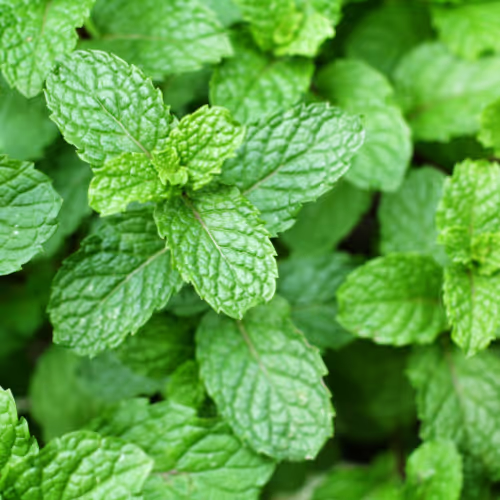What Does it Taste Like?
Mint is bright, cooling, and sweet with a slightly peppery edge. Its menthol content gives it that signature icy sensation, which stands out even when used sparingly. The leaves are tender and soft with a slight fuzz on the surface, making them pleasant to chew or steep. Stems can range from soft and juicy in younger sprigs to woody in older growth.
Varieties we grow

Spearmint
Spearmint is milder and sweeter than peppermint, with a gentle menthol flavor and subtle grassy notes. It’s ideal for savory dishes, salads, and drinks where a softer, more herbaceous mint character is preferred.

Peppermint
Peppermint has a bold, bracing flavor with high menthol content that delivers a strong cooling sensation and slight bitterness. It’s commonly used in teas, candies, and medicinal applications where a more intense minty punch is desired.
Why Should I Eat It?
Mint is a gentle digestive aid, known to help relieve bloating, indigestion, and nausea. It contains modest amounts of vitamin A, a fat-soluble vitamin important for vision and immune function, as well as antioxidants that may support cellular health. Though typically used in small amounts, fresh mint can still contribute to your daily intake of plant-based nutrients.
Mint

May - Aug
Few herbs spark such a clear sensory memory as mint. Its scent alone can conjure cool breezes, garden teas, or the first bite of a summer salad. Grown in backyards, window boxes, and wild patches across the world, mint has been used for centuries—not just to flavor food, but to soothe, refresh, and revive.
Recommended Storage
How Do I Store It?
Short Term
- Keep mint fresh by trimming the stem ends and placing the bunch in a glass of water, like a bouquet. Cover loosely with a plastic bag and store in the refrigerator for up to a week.
- Alternatively, wrap the sprigs in a damp paper towel and store them in a sealed container in the crisper drawer.
